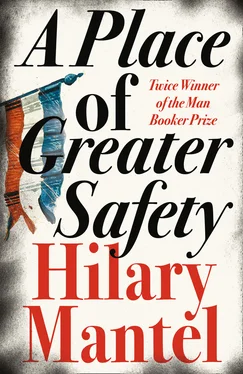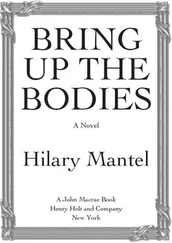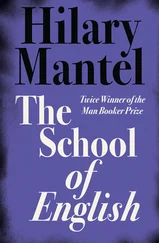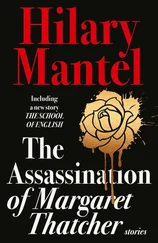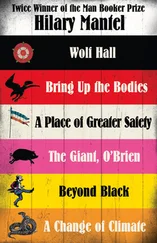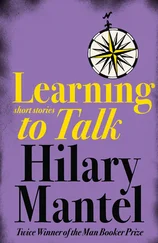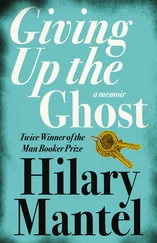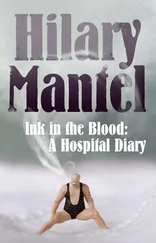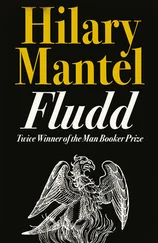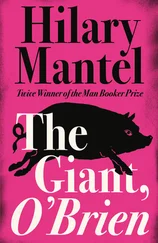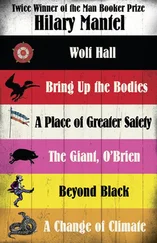HILARY MANTEL
A Place of Greater Safety

This novel is entirely a work of fiction. The characters and incidents portrayed in it are the work of the author’s imagination. Any resemblance to actual persons, living or dead, events or localities, is entirely coincidental
Fourth Estate
An imprint of HarperCollins Publishers Ltd. 1 London Bridge Street London SE1 9GF
www.harpercollins.co.uk
Paperback edition first published by Harper Perennial 2007
First published in Great Britain by Viking 1992
Copyright © Hilary Mantel 1992
Hilary Mantel asserts the moral right to be identified as the author of this work
PS section copyright © Sarah O’Reilly 2010
PS™ is a trademark of HarperCollins Publishers Ltd
A catalogue record for this book is available from the British Library
All rights reserved under International and Pan-American Copyright Conventions. By payment of the required fees, you have been granted the nonexclusive, nontransferable right to access and read the text of this ebook on-screen. No part of this text may be reproduced, transmitted, downloaded, decompiled, reverse-engineered, or stored in or introduced into any information storage and retrieval system, in any form or by any means, whether electronic or mechanical, now known or hereinafter invented, without the express written permission of HarperCollins
HarperCollins Publishers has made every reasonable effort to ensure that any picture content and written content in this ebook has been included or removed in accordance with the contractual and technological constraints in operation at the time of publication
Source ISBN 9780007250554
Ebook Edition © NOVEMBER 2009 ISBN: 9780007354849
Version: 2019-07-29
This ebook contains the following accessibility features which, if supported by your device, can be accessed via your ereader/accessibility settings:
Change of font size and line height
Change of background and font colours
Change of font
Change justification
Text to speech
From the reviews of A Place of Greater Safety :
‘Crafty tensions, twists and high drama … a bravura display of her endlessly inventive, eerily observant style’
Times Literary Supplement
‘A formidably talented novelist … She has seen deeply into her characters and their involvements with one another, and makes them live for us, with vivid invented detail, day by day, as they are battered or seduced by public events’
London Review of Books
‘Much, much more than an historical novel, this is an addictive study of power, and the price that must be paid for it … a triumph’
Cosmopolitan
‘Intriguing … She has grasped what made these young revolutionaries – and with them the French Revolution – tick … This is the perfect complement to Simon Schama’s history of the French Revolution, Citizens ’
Independent
‘Concentrating on the tortuously interwoven relationship between its three most important protagonists, Robespierre, Danton and Desmoulins, Hilary Mantel has pulled off the apparently impossible … an ambitious, gripping epic … The host of minor characters and the swirling mob who form the necessary background to the story are never lost from sight, but are expertly marshalled on and off the bloodstained stage … a tour de force of the historical imagination’
Vogue
‘Mantel’s grasp both of detail and the complex sweep of events is quite remarkable …“her people” are firmly rooted in physical and historical reality … Little is known of the personal lives of most revolutionary leaders before 1789, and after they became famous, they lived constantly in the public eye. Yet Mantel has managed to get inside them by feeling her way through their writings, families and, quite brilliantly, their women’
Times Literary Supplement
To Clare Boylan
Cover
Title Page
Copyright
Note to Readers
Praise
Dedication
Author’s Note
Cast of Characters
Map of Revolutionary Paris
PART ONE
I. Life as a Battlefield (1763–1774)
II. Corpse-Candle (1774–1780)
III. At Maître Vinot’s (1780)
PART TWO
I. The Theory of Ambition (1784–1787)
II. Rue Condé: Thursday Afternoon (1787)
III. Maximilien: Life and Times (1787)
IV. A Wedding, a Riot, a Prince of the Blood (1787–1788)
V. A New Profession (1788)
VI. Last Days of Titonville (1789)
VII. Killing Time (1789)
PART THREE
I. Virgins (1789)
II. Liberty, Gaiety, Royal Democracy (1790)
III. Lady’s Pleasure (1791)
IV. More Acts of the Apostles (1791)
PART FOUR
I. A Lucky Hand (1791)
II. Danton: His Portrait Made (1791)
III. Three Blades, Two in Reserve (1791–1792)
IV. The Tactics of a Bull (1792)
V. Burning the Bodies (1792)
PART FIVE
I. Conspirators (1792)
II. Robespierricide (1792)
III. The Visible Exercise of Power (1792–1793)
IV. Blackmail (1793)
V. A Martyr, a King, a Child (1793)
VI. A Secret History (1793)
VII. Carnivores (1793)
VIII. Imperfect Contrition (1793)
IX. East Indians (1793)
X. The Marquis Calls (1793)
XI. The Old Cordeliers (1793–1794)
XII. Ambivalence (1794)
XIII. Conditional Absolution (1794)
Note
Keep Reading
Excerpt from Wolf Hall by Hilary Mantel
P.S. Ideas, interviews & features …
About the author
A Kind of Alchemy
Life at a Glance
A Writing Life
Read on
Have You Read?
About the Author
Also by the Author
About the Publisher
THIS IS A NOVEL about the French Revolution. Almost all the characters in it are real people and it is closely tied to historical facts – as far as those facts are agreed, which isn’t really very far. It is not an overview or a complete account of the Revolution. The story centres on Paris; what happens in the provinces is outside its scope, and so for the most part are military events.
My main characters were not famous until the Revolution made them so, and not much is known about their early lives. I have used what there is, and made educated guesses about the rest.
This is not, either, an impartial account. I have tried to see the world as my people saw it, and they had their own prejudices and opinions. Where I can, I have used their real words – from recorded speeches or preserved writings – and woven them into my own dialogue. I have been guided by a belief that what goes on to the record is often tried out earlier, off the record.
There is one character who may puzzle the reader, because he has a tangential, peculiar role in this book. Everyone knows this about Jean-Paul Marat: he was stabbed to death in his bath by a pretty girl. His death we can be sure of, but almost everything in his life is open to interpretation. Dr Marat was twenty years older than my main characters, and had a long and interesting pre-revolutionary career. I did not feel that I could deal with it without unbalancing the book, so I have made him the guest star, his appearances few but piquant. I hope to write about Dr Marat at some future date. Any such novel would subvert the view of history which I offer here. In the course of writing this book I have had many arguments with myself, about what history really is. But you must state a case, I think, before you can plead against it.
Читать дальше
